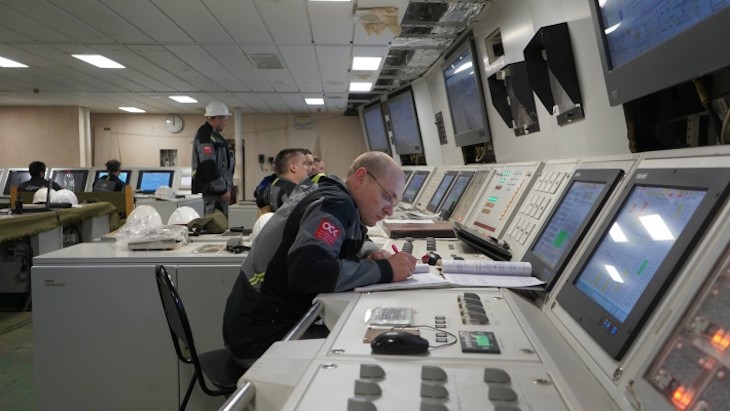First criticality at Ural icebreaker
The first of two reactors aboard Russia's new Ural icebreaker has been brought to criticality. It is part of a fleet that will enable Russia to open new sea routes and develop remote regions.

The control room of the Ural as technicians initiate criticality (Image: Baltic Shipyard)
The ship is under construction by the Baltic Shipyard, whose experts worked with those of the ship's future owner, Atomflot, to commission the reactor. They achieved the stable chain reaction known as criticality for the first time on 27 May.
Ural is the third of Russia's Project 22220 icebreakers after Arktika and Sibir. Working with subsequent vessels Yakutia and Chukotka, this new fleet will maintain passability of the Northern Sea Route from Europe to Asia and thereby enable Russia to develop more of its vast Arctic and Far East territories.
Project 22220 vessels are powered by two RITM-200 pressurised water reactors, mounted side by side, which produce total thermal power of up to 350 MWt which converts to 60 MW at the propellers.
The Baltic Shipyard plans to deliver Ural to Atomflot at the end of the year, which would represent a construction time of about five-and-a-half years.
Researched and written by World Nuclear News
- China Institute of Atomic Energy
- Nuclear Power Institute of China
- Southwestern Institute of Physics
- China Nuclear Power Operation Technology Corporation, Ltd.
- China Nuclear Power Engineering Co., Ltd.
- China Institute for Radiation Protection
- Beijing Research Institute of Uranium Geology (BRIUG)
- China Institute of Nuclear Industry Strategy (CINIS)
- China Nuclear Mining Science and Technology Corporation


